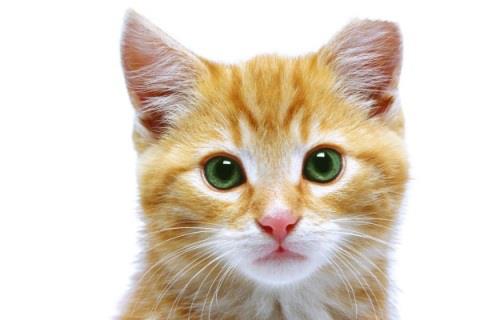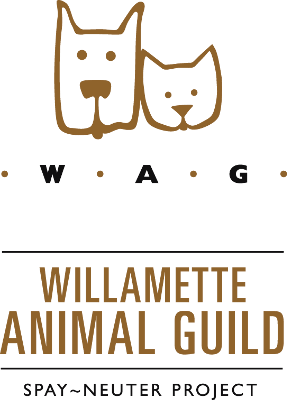Feral Cat Policy
WAG services feral cat standbys only for Lane County residents and some surrounding areas.
WAG only accepts feral cats in traps (PLEASE INDICATE WEIGHT OF TRAP BEFORE TRAPPING AND WRITE IT ON THE TRAP) –No Exceptions. Trap rentals: Please note we have a limited number of traps that can be rented with a $100 refundable deposit, for a period 10 days at a time, for the purpose of S/N at WAG only. You MUST call 541-345-3566 to inquire if we have an available trap and schedule a time for staff to do paperwork/money and show you how to use the trap. Feral cat package is $66.
Thank you for your concern about the feral and stray cats of the community! The very best thing you can do for them is bring them in for our Feral Package, which includes: spay or neuter, rabies shot, distemper shot, and flea and ear mite treatment. Sutures dissolve after several weeks and do not need to be removed.
WAG is very feral-friendly. Since it is difficult to make an appointment for a cat that needs to be trapped, we allow for ferals to be brought in on a standby basis. Bring the cat in a trap. Working with a feral cat in a carrier is dangerous for our staff and MUST BE IN A TRAP!
Cover the trap COMPLETELY with some kind of cloth. A tarp may cause the cat to overheat.
Come to the clinic at 7:45 am or before, Monday thru Thursday. While our feral standby system is first come, first served, there are many factors our team considers and will prioritize over your order of arrival at our clinic, see below. Clients with appointments for owned pets will be checked in first, then at around 7:45 feral standbys will be accepted if there is room for them in the day’s schedule.
Feral cats will be accepted for surgery even if they have eaten the food used as bait. Use about a tablespoon of food, not the whole can. Usually they will not eat anything after the trap has sprung unless they are kept overnight. If it is necessary to keep the cat overnight, remove remaining food as best you can and set the trap on wooden blocks or bricks so that urine will pass through. Newspaper should line the trap before it is set. COVER THE TRAP and place it in an unfamiliar place such as the garage. This will help to keep the cat from injuring itself trying to escape the trap. The cat will spend its time instead tearing up the newspaper and pulling at the cover.
When you arrive at the clinic, keep the cat in the car while you inquire about check-in. Ferals are accepted in a certain order, to the best of our ability:
- Pregnant females.
- Adult females, unless the schedule is overbooked with females as a result.
- Adult males.
- Kittens under 4 months of age. Kittens are less likely to become part of the reproduction process and are easier to hold until the next day.
Ferals that are brought in by individuals are more likely to be admitted than those brought in by rescue organizations, since the organizations are more likely to have holding facilities for the cats.
After surgery, cats need to be kept warm overnight as the anesthesia interferes with the normal regulation of body temperature. The cat should not be released immediately in any case as the disorientation caused by the anesthesia does not wear off for about 12 hours. Females should be kept confined for as long as possible to prevent the incision from opening; the staff at WAG can advise as how best to do this, depending on your situation. Click here for post-operative care instructions.
The staff can counsel those who have never trapped as to the most likely method of trapping the cats. Traps are available, with the payment of a refundable deposit, for ten days or as long as the customer continues to bring in cats.
Note: Ear tipping is mandatory with the Feral Package. A free-roaming cat with an ear tip is recognized as being altered and vaccinated, and not likely to be the source of nightly howling, spraying of the front door, or kittens appearing from under the house.


